wall graphic by Alica Bramlett
2006 |
...Not Default”
time lags and implementation cycles |
CLOSING COMMENTS and PERSONAL REFLECTIONS
PART 5 OF 5 |
| I started this web site in 1999 primarily as a personal exercise - a biographical notebook. I wanted to see if 43 years (at that time) of work was adding up to anything of significance and value. At the time, my efforts were beginning to feel like a gigantic waste of time and I that I had lost connection with what I had set out to do. That MG Taylor had suffered a major financial setback certainly added to this feeling but by no means could account for it. I had not kept a regular journal for a number of years although I still kept topical and project related notebooks - nothing that was an attempt to see my experience whole and nothing that I could share broadly by “publishing.” Software such as Dreamweaver was now available and this opened access to the www without having to learn the markup language directly. Also, the development of the entire www system promised the kind of presentation level that desktop publishing had provided a little over a decade before in inexpensive print. I did not start with a master plan in mind nor even a format other than the two frames which is use to this day. I just started writing and posting. In September of 2001, I returned to the practice of hand written and drawn Notebooks as I find this media to be essentially different from digital. The thought process is different. Subsequently, I have started the process of scanning and posting these on this web site. The two, I think, co-mingle very well. With all the writings on this web site, I have posted as I worked not waiting until a given piece was finished. This involves some risk and to this day less than 10 percent of the articles are considered “done” by me. It was intended to be a Notebook and it remains so. However, in 2005 I started a “Papers” section and these represent a move from talking primarily to myself and more to those who now read my web site which, as of April 2006, is seven to eight thousand visits a month. This paper, A Future By design Not Default, is an example. While far from being formally publishable-level works, these Papers do have a broader intent than personal reflection and are focused messages on topics I consider important to our time. They are, generally, critical pieces. This has not been my intent nor am I naturally a pessimistic person. The subjects arise out of the experiences I am having and what I am observing in the immediate world around me. This Paper, it is clear, returns to a subject that has concerned me for many decades. I did not start my work-life concerned with such things - I started with the intent of building beautiful human habitats. This requires human beings with certain values, a place to build and a stable and just social, political economy. All of these, I have attempted to show, are at risk. So, I came to this point through experience and reluctantly. The subjects of this Paper introduced themselves to me through my experiences and I felt compelled to do more than report about them - I became determined to create a means to respond to our common condition in a way that did not just generate a bigger mess as a consequence. Thus, MG Taylor and the work of the last 30 years. Thus my situation, in 1999, when I wondered if I was way off track and had merely squandered any hope of a useful and successful architectural practice. I understand through personal experience why most do not want to deal with issues of this sort - it seems impossible to accomplish anything. However, I believe the times demand it and that, in reality, there is no choice no mater how ambiguous and risky the venture may seem. |
| This web site also provides me a portal to the world that I otherwise would not have. I am not naturally a garrulous person. I do not promote myself or MG Taylor. Nor, do I “network.” I never contact someone unless there is a specific active project-related reason to do so. I do not seek to be published or offer my services as a speaker. I find it far more effective to respond (and then vigorously) when contacted. When someone sees this work and responds, this is feedback uncorrupted by self promotion. This is a true signal of where the idea is and how well we are doing in bringing it to practical expression. True to this philosophy, neither is this web site promoted by any of the various means possible or is it linked to any other site other than for the single intention of making their work, as represented, more available. I do not just link to sites I totally agree with or to people who support my approach. I link to sites I believe have something valuable to say. I consider this practice the only appropriate way to offer organic architecture - I call it authentic architecture [link: making authentic architecture] - and anticipatory design science - as Bucky Fuller described it - to the market. This is because the process of selling can corrupt the process of doing in certain kinds of work which require an unique and strong fiduciary relationship between provider and user (terms that take on a totally different meaning in a ValueWeb [link: valueweb] structure). Because of this “passive” approach, I can take great delight as I watch the rate of visits to this site grow monthly - as does the diversity and location of organizations and individuals who come to browse and often stay for hours. On a printed page count, on an annual basis, I am a best selling author of modest scale [link: Matt Taylor web site stats] . I consider this readership a confirmation of the work and its broader applicability which is far greater, in potential, than than just that of the present client/partner users and their application of it. A network of Centers available to facilitate the transformation [link: organizational transformation] of organizations [link: network of navcenters] seemed like a fantasy in 1980 - now, a quarter of a century later, is is actually coming to past. This Notebook documents one viewpoint of how this happened. |
| This Paper, and this web site, as it has evolved over 7 years, begins to answer the questions that have occupied my mind since that day in New York City when Lester Windling and I debated the merits of using architecture in commercial development [link: don’t you think...?]. The Thesis and the work have stood the test of time, over 45 years, to my satisfaction. The Taylor Method has demonstrated it can assist groups, with great time compression, through immensely complex and controversial issues [link: f-15 documentation]. A network of NavCenters is in the making and a ValueWeb is forming. There are Worthy Problems [a future by design not defauly - worthy problems] to address - if they be mine or other’s it does not matter - that, if solved, can get at critical issues while progressing toward stemming their further generation. It is possible to imagine and design a world where variety is in balance and humanity can creatively co-exit with each other and all life. We are reaching a time when doing so has become a necessity if we are to survive in any way consistent with our stated values. This is convergence. In periods of convergence, markets work better. In all this, there is hope. Hope is justified, however, only if it is connected to intent, program, resources and work. |
| This web site documents my confirmation of these precepts and has initiated my sharing them with a wider number than work intimates and clients. This Paper is, as I have said, is a celebration - my “coming out party.” This Thesis has occupied me a long time. Coming to closure with it by bringing an appropriate response to the challenges it presents may well occupy the next several decades of of my life. It is, in itself, a Worthy Problem. However, this is a task greater than any one person and any community. It is greater than any country. No single organization can hope to solve it. Success requires a new organizational architecture with greater diversity and a far greater reach than any one traditional organization can muster. |
|
| We get now, in this long discourse, to what is perhaps the first early indication that a new way of working can be created and that it can be applied to betterment, not destruction, and it can be organized in a way consistent with Enlightenment Values: this will be demonstrated, to my satifaction, if a true ValueWeb, as I have defined it, will emerge to do this work. This may be happening. |
| I conceived the ValueWeb Model, the Business of Business Model [link: the business of business], in 1985. It attracted little attention for ten years until the F-15 community embraced it in the task of putting the jet back into production. While not a technical application of the model, the F-15 community employed the philosophical precepts in an effective way and did what was considered, at the time, the impossible [link: f-15 spot] . Their work was the expression and in the spirit of a true ValueWeb architecture - the first large scale test of the concept with a complex global problem involving tens of thousands of people, multiple governments and corporations world-wide. |
| The relationship between capital/ownership, management, customer and producer in the traditional organizational architecture is a passive-aggressive one. True, extraordinary leadership can temporarily overcome the worst of the consequences which flow from this architecture but, at best, this imposes a tremendous overhead and, in the end, structure wins out. The only reason that this has not mattered before is that every organization carried the same burden so there was no clear distinction in this regard in the competitive sense. Everyone carried the same cost. What was considered “just the way it is,” in terms of how people and organizations work together - and was regarded as a factor of human nature - rather should be understood as a measure of “just how organizational structure is.” We are not observing the nature of people; we are seeing what people generally do in a structure that intrinsically puts their interests in conflict with one another. We know this because in thousands of DesignShops - which are based on a totally different organizational architecture - people consistently act is completely different ways. It follows that if this architecture can be scaled to the enterprise level, and become the consistent work environment, then the same kind of results will be achieved. It has not mattered on the Human Enterprise level - as long as you are willing to discount the unnecessary waste of treasure and killing - because we had not, until recently, “closed” the system. What I mean is that we have always had a way out, somewhere else to go, a way to start over. Now, the density of relationships, feedback loops and causal outcomes makes every action count in a whole new way. We are the master’s of our evolution even as we continue to act as absentee landlords. |
| As I have noted, the new technologies may offer Humanity a way out. The image, however, of some kind of transcendent Kurzweilian Humanity “leaving” a polluted and shattered planet strikes me as esthetically displeasing, ethically corrupt, wonton, lazy and just plain sloppy. This would be an outcome totally devoid of art. I question if a humanity who “escaped” in this way would have the moral fiber to properly employ the god-like powers that technology had bestowed upon them. I wonder if we would be anything other than menace to the Universe if we “came out” of our present nursery school level of planetary and physical-mental constraints in this manner. Actually, in this stark sense, I do not believe Ray Kurzweil would disagree with me. |
| When I delivered my ReDesigning the Future course in the mid 70s I stated that the notion that Humankind was headed for a transformation was a “given.” The questions I was concerned about were “how much blood we would leave on the street in the process” and “how many bad habits would we bring forward to lay the seeds of destruction of the next era.” My sense is that it is good practice to come to closure with an era by learning how to do it right even as the steps to a new era are being made. The seeds of WWII were directly sown in the way the WWI peace dividend was distributed as was the present situation in the Mid-East. We have not demonstrated the ability to run an industrial era economy among a network of participating nation state republics by Enlightenment principles let along “manage” what lies ahead. The good news is if we were to apply the best of what we know to do to our management of nation state governance it would look good compared to our present situation. The bad news is we are not headed that way - we are headed back toward historically failed patterns. The important news is that even if we do turn this vector around and move back to a better practice of the nation state ideal we will find that this global organizational architecture is not competent to deal with what is ahead [link: structure wins]. |
| When we started MG Taylor, we based our work on certain assumptions [future link:]. Among these is that network architecture would prove to be the dominate organizational strategy moving into the 21st Century. How enterprise may be organized in the future is an interesting question and worthy of work although it is most likely beyond our comprehension, at present. The ValueWeb architecture was a design attempt on my part to create and effective bridging strategy between the industrial organizational model and the “unknowable” future one. The ValueWeb is a transition strategy for transition managers. |
|
Some Examples of Good News
|
| I have focused in this Paper on the GAP between where we are and where we must be. There are signs that the SYSTEM and significant portions of the market are responding. I will note some of them - in the realm of architecture - with qualifications. |
| United Technologies and Lafarge Group are leading an alliance of companies formed by the World Business Council for Sustainable Development to see if buildings can use zero net energy, be carbon neutral, and still be commercially viable [link: constructing a foundation for net zero buildings]. Success with this has the potential to abate over 40 percent of U.S. CO2 emissions. One of the goals is to achieve an unified industry strategy for realizing the opportunities the alliance will identify on a fairly global basis by 2050. Notice the time lines: |
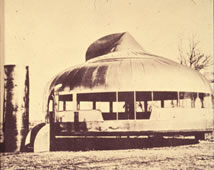 |
Wright and, Bucky [link: bucky fuller institute], in the 1940s both built houses designed to deal with affordability and sustainability. Their solutions were different, Wright pursuing his Broadacre design strategy and Fuller his global deliverable housing concept - however, they are actually sympathetic if a broad, multi-solution lean-production view is taken. In the 70s alternative housing - Ken Kern being a prime example of bringing housing back to the hands of the individual - had a brief heyday - the movement lives on in Northern California, where I live, to this day [link: mendocino]. CD Keeling’s, work in CO2 measurement began to get attention in the 1980s and Al Gore, in 1992, brought global warming into the political arena. Now, science is aligned on this issue [link: 1700 concerned scientists]. Today, Industry is beginning to respond with large scale construction projects that are paragons of sustainability virtue and very sensible economics.
As we discovered in 1975, the problem is not knowledge or adequate demonstration projects - the problem is what a consumer society has been “sold” as the good life and convinced to consume which is - un-named, of course - the life of Planet Earth. Looking at these projects, and their history, one wonders: what is the excuse?
click on the illustrations for links |
|
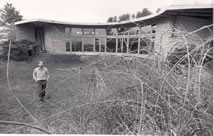 |
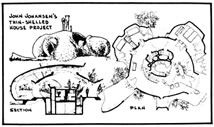 |
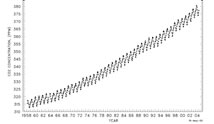 |
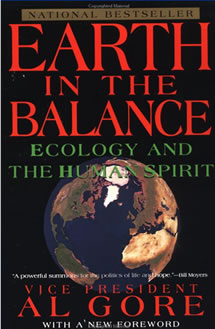 |
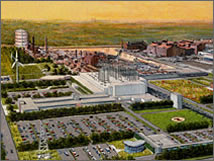 |
| What you see here are two overlapping two-generational cycles. Wright and Bucky in the 1940s, the alternative movement of the 70s, the proof of concept cycle which now can be seen by the one off building of a large number of sustainable houses and offices the great proponent and practitioner of which is Bill McDonough [link: cradle to cradle case studies]. This is one two generational cycle. Now, any affluent company can build an sustainable work/production environment and any middle class to affluent individual a sustainable residence. Not easily - but it can be done. The science cycle staring with Arrhenius, in 1896 [link:global warming science history], Al Gore the first high level politician to put his career on the line on behalf of these issues, to a serious industry effort which is, in one way of seeing it, a close of the first wave and start of of another one. The success of An Inconvenient Truth [link: wilipedia an inconvenient truth], in 2006, is the Tipping Point between the first and second phases. It will easily take a generation - if not two, after functional capability is developed, to significantly retrofit and replace the world’s industrial, office and housing stock to the degree necessary to make the impact required on the scale needed. Both these two cycle waves, while around the same issues, are different in their focus and purpose. The first, with the exception of Fuller, was aimed at ubiquity of individual capabilities and that now exists at least for those with sufficient incomes living in a relatively free and industrially advanced country. The second will be focused, ultimately, on the transportation, food production, work and living processes - as a system - of the entire global population and will require an integrated global response [link: master plan] employing a whole new industrial base which it just starting to emerge . This is what Fuller was after but - with his work - you always have to expect two, two-generation cycles because of his incredible design-science discipline - a practice, as far as I know, which has not been duplicated. It is interesting to note that 2050 feels more than a tad late to “to achieve an unified industry strategy” when even when the more optimistic scientist’s weather and energy supply forecasts are considered; whereas, had we listened to Fuller - and acted - we would now be well into the final implementation phase - the second cycle of the second wave - on a global level. |
| It is possible to list thousands of such projects and hundreds of such chains-of-connection as are illustrated above. You might say that I have defeated my own Thesis. I will argue not so. The issue is not that Humanity does not know how to survive and prosper - it is we are not doing so. The issues is not that there are no demonstration projects in almost every category of concern - it is that they are largely ignored. Once again this is evidence that the decision processes of our society are not requisite with the challenges we face, be they in government, in the board room, in the school, in the marketplace. These processes are inadequate in terms of the speed by which comprehensive responses are possible, in the scope of the issues addressed and in the character that determines what is addressed. It is tempting to hide behind the good news believing all will work out fine. Even this requires ignoring the life that is dying now. The goods news actually shows us how bad things are and the measure of our failure as a society to secure our present and earn our future. It would be one thing if we did not know better and have solutions on the shelf waiting to be applied. This is not the case. Any bad times ahead we have “earned” by our own evasion and lack of appropriate response. |
|
QUESTIONS
what is the sound of one paradigm clapping?
|
| In order to make my Thesis more concrete, following are a number of questions to answer which will focus on the the consequences of both the “bad” and “good” news about our possible futures. These questions probe at specific issues that will be the consequences of our present actions if we are successful with our in-place “plan.” They also reveal aspects of our social paradigm and its in-place social-economic structure. |
| When virtual reality become as “real” as physical reality, what will be our attitude about all things physical including Planet Earth? How will we think about our bodies? Architecture [future link]? Sex? What will be economy? A human body, by the way, consumes a 100 watts an hour [link: 100 watts]. What is the cost of a virtual life style? What is “real?” What will be “value?” What is a “society” in this context? Will there be a balance between physical reality and virtual reality? Will they add value to one another? All of our arts can be considered as virtual reality now - just primitive in their media. What will be the transition to whatever becomes the norm [link: the future of the internet]? Will there ever be a norm? Welcome to SimLife version 128.4. |
| So things are a bit primitive so far. Yet, a growing number of people are spending a great deal of their time in this space and serious funding is growing. The gaming industry is larger than the movie industry and the technology is just beginning its upward slope. What will be possible in 5, 10, 15 years? Will there be traditional schools do you think? What about all those office buildings? Do you think that real estate and wealth based on real estate might be effected? |
| What happens is the life span of the boomers was “suddenly” to extend 10 to 20 percent from the present estimate? This is a modest improvement, given the possible progress of medicine and the breakthrough research now underway. What will be the impact on pension funds and, Social Security programs, both already under pressure, along with retirement funds? How will the social covenant between generations hold up? What will be the impact on the economy, governments, banks and insurance companies if their actuarial figures are abruptly upset? What are the political consequences as one generation does not pass on wealth and continues to hold voting power? The fewer work for the many? Of course, wealth itself will continue to grow but who will own it and control it? |
| Many believe that the boomer generation can live long enough to live forever. Even if they fail miserably in this effort a 20 % life extension is not unreasonable and will have interesting social consequences. If you came to believe that you could, by changing your life-style habits, live long enough to live forever - what would you do? How would this effect your sense of career and your approach to economics? How would it effect the political decisions you support? What would you think about marriage, family, community, work, investment? Luckily, all of our pension and retirement plans are economically healthy and robust enough so that this will not be a problem. And, I am sure that the present generation of leadership will gracefully hand over control and power - so, no problem here. And, of course, we are so far below the carrying capacity of the planet that this will not be an issue. Thinking about it, I do not even know why I brought the question up. |
| When 1984 came and left, George Orwell [link: 1984] was called “wrong.” Interesting conclusion. You see, his world clearly did not come about on schedule so he was clearly wrong about everything. Why, democracy was on the rise was it not? It is nice to know we do not have to worry or be dilligent about any of this stuff. And of course, as a society, we have not. After the cold war, the growth in spy grear for businesses and private uses has been souring. What if Orwell was just “wrong” about timing and the style of future repression? After all, all he had to base his model on was the good old fashioned Communist and Fascist regimes of his day - very defunct, easy to discredit ideas not at all on the cutting edge of repression. The technology of affordable total surveillance is now upon us. So is the post 9-11 environment and a world of terrorism. It is clear that most people are willing to give up abstract “rights” for security and money as long as they do not feel oppressed in a direct way. Whatever their governments do to other peoples in the name of freedom is also apparently OK. Almost all transactions are electronically tracked and kept in data bases. We now have electronic voting machines that do not produce records, whose inter code is “proprietary” and whose president is involved in partisan politics in a state - a key state in a national election - where his machines are used. We have State officials whose job it is to certify election results acting as a head of one of the party’s running in their state. Neither of these, apparently, are seen as a conflict of interest. If you walk 20 blocks in New York City do you know how many times your picture is taken? Three questions: 1) What do you do when a mechanical “fly” can come into your home and transmit, to a remote receiver, full motion, high resolution video of everything that takes place there? [link: implants create insect cyborgs] 2) What do you do when this devise can be inserted into your body without you knowing it? 3) What do you do when you can be influenced remotely, physically and emotionally, when you engage in behavior that is considered wrong by someone with sufficient power and technology? Science fiction? call it about now for question 1, in a few years for question 2 and maybe about 10 to 15 years for question 3. All the basic science is done and the devices are being tested. It is a matter of engineering now. Are you sure that our basic civil liberties, which were won only in the last 100 years, by the way, will survive modern circumstances and technologies? of course there will be counter measures - there always are. What kind of a world is this going to be? Who protects us from the protectors and who regulates the regulators? I write this as even more stories about lobbyists and the U.S. Congress emerge. Is our civil society up to these challenges? Are we as individual citizens? |
| Davis Brin has written a thoughtful and comprehensive book on this subject. As far as I know it has not been widely read nor have the issues he highlights been widely debated. |
| This short exercise in question asking and synoptical reading can go on and on - several hundred books long, in fact. This is what the ReBuilding the Future course is about: asking question, dialoging with peers, reading diverse sources and building a better model that bridges the gap between our actions of today and the choices we will have in the future. The above examples are to give you a taste of the process and to illustrate the range and scope of a small number of the things that we need to be thinking about. |
| These three topics, virtual reality, longevity and reciprocal transparency, are rushing at us like a freight train. I receive dozens of links a day announcing breakthroughs in one or all of them. There are many other arenas of which the same can be said. I know of no comprehensive, rational, balanced, systemic public dialog connected to policy making about the implications of these topics. |
| We are creating a future where almost anything we can imagine today can be possible. It is full of great promise. And, there are some serious traps in the road ahead. If we drag our old habits into the future we will surely fail. If we rethink our future and become aware of the consequences of our actions and take full responsibility for them; if we become great artist/engineers in how we shape this new world - we will surly succeed. It really is a simple choice. But, is is a choice. |
|
| As I was finishing this piece, I started reading The Science of Synthesis - Exploring the Social Implications of General Systems Theory by Debora Hammond. While I have become aware that Systems Theory and Cybernetics has been under attack, the degree of this and the reasons for it have escaped me. Hammond’s book explores the history and work of some of the seminal thinkers in this field and provides a valuable context to the work and the times from which it emerged. I never took this work - as a body - to be mechanistic or industrial. Just the opposite. My own philosophy was well formed when I first explored Systems Theory and Cybernetics in the late 60s and early 70s and I have always seen them in their dynamic, open and emergent-organic sense. I still do. Hammond explores these issues and brings needed balance to the debate. |
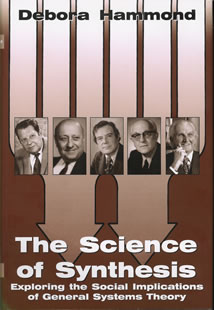 |
| “Although the rise of mechanistic science in the seventeenth century is often associated with the emergence of the political democracies of the West, this dual heritage from the Enlightenment contains an inherent dialectical tension. As critical theorists in the Frankfurt School have argued, the promise of progress through the control of nature ultimately entails the control of human nature, undermining the liberating impulse of democracy and the ideals of social justice that are also part of the Enlightenment tradition. |
|
In seeking to address the limitations of mechanistic science, the heroes of my tale are not advocating a return to an earlier or antiscientific view, as much as they are challenging science to transcend its own limitations, to evolve and adapt to the changing conditions of its environment, and to develop a more expanded and inclusive sense of self-consciousness as a critical force in shaping the social order.”
Debora Hammond
2003
Prolog - page 2
|
|
| I am a designer. As such, I look at information differently than many in other disciplines. While I seek the most credible information I can find, I am less concerned about its ultimate “truth” - a dubious concept in my mind - than its utility. “What will this enable me to do and make” is the question I ask of everything. In my younger days when I was seeking to find a name that described what I did, I landed on the term Synthesist. Ultimately, this fell under its own weight and implied sense of inaction. The term designer is not much better. I never could be a thinker or a doer one independent of the other. “Architect” works well except not in the sense that it has been used in the last hundred and fifty years and certainly not as a description of the present professional practice of the art. I remain, “a man without a profession.” to paraphrase Edward Hale [link: a man without a country]. |
| So, to be clear if that be necessary: I do not believe that complex systems can be planed nor controlled. And, nearly everything that is interesting is a complex system. Control has to be built into a system, as self regulation, on many levels of recursion. Control is not something exercised on something else. An example of a misunderstanding of control is the U.S, economy and the political debate around regulation. One party wants little or no regulation. The other wants to regulate from out side. Neither strategy will work and both have serious unintended consequences. As the economy becomes larger, more complex and global we will see ever increasing oscillations. This is simple cybernetics. We have to design built-in self-regulating mechanisms. the best way to do this is with the money [link:the tool which became a god] itself [link: rutgers presentation]. Self-regulation is a characteristic of life and life-like things. I not believe that now that we face complexity we cannot understand nor control - as we used to think we could - is any excuse for falling on the other side of the dichotomy and assuming that “things happen” and that is for the best - somehow, and too bad is someone gets hurt. Science and philosophy, often so critical of religious faith, has its own sets of beliefs supported only by themselves. The Academy, also. The politics of accepted “knowledge” is a study in itself. Structure and process are the same thing. Both can be designed, engineered, tested and improved. Both can be made - far more than today - to be self repairing and evolving. Neither can be ignored. An economy [link: upsidedown economics - 12 aspects] is a tool not a god. Tools should be well crafted, respected and properly employed but never worshiped [link: the monkey’s paw]. The measure is humanity but this can never be put in opposition to other life for that is an inhumane point of view. Frank Lloyd Wright put it this way: “What a man does, that he is.” Extend this concept to all humans and humanity and a basis for measuring outcomes is provided [link: transforming business]. Good engineering focuses on worst-case - on unintended consequences. The objective is too engineer these outcomes out of the system. In dynamic systems, this is best done with properly placed feedback loops. The engineering process, itself, must be dynamic and be made of many full cycles of the entire creative process - high frequency-low magnitude results. This is learning. if we want a HUMAN society, we had better learn about iteration, recursion, feedback and their relationship to complexity and emergence [link: valueweb mechanics]. We had better abandon the soul-body dichotomy. We are building complex systems. We had better learn how to build dynamic, sustainable ones. |
|
| The journey from the world of today to a “future by design not default” will take a generation. What is critical is when this journey begins not when it ends. What is critical is the attention that it receives and the scale scope and quality of the participation it attracts. |
| This can be an exciting and life-giving enterprise. It can be business, sport and recreation all at once. It can be - and for awhile must be - the HUMAN ENTERPRISE. We will determine what this planet will become. We will design the social systems, the political rules, the terms of engagement of economic, (whatever this turns out to be) transactions. We will decide if this planet is shared by all or dominated by a few. We will determine if other forms of life - animals and plants - and perhaps intelligent machines of our own making - will have a place in this world; or, if we have a place in theirs. We can eliminate poverty, poor health, aging and premature death.We will attempt to do all of these things and more. We will do them well - or poorly. We can build a planet that is a work of art, alive and evolving. We can build a dead rock where life has only a tenuous hold in a few glass domes - covered bubbles of green - the remains of what once was free life. Whatever, what we do over the next generation will set the stage for an era to come and it will redefine what it means to be human. It can be said that it will prove what HUMAN really is. |
|
Quo Vatus by Matt Taylor
1987
|
|
| GoTo: INDEX - Matt Taylor Papers 2006 |
|
|
|
|
| GoTo: A Future by... part 1 |
|
|
|
|
| GoTo: A Future by... part 2 |
|
|
|
|
| GoTo: A Future by... part 3 |
|
|
|
|
| GoTo: A Future by... part 4 |
|
|
|
|
| GoTo: Why I Run a Business |
|
|
|
|
| GoTo: Money - the Tool That Became a God |
|
|
|
Matt
Taylor
Treisen
January 29, 2006

SolutionBox
voice of this document:
ENGINEERING • STRATEGY • PRELIMINARY
|
|
|
posted:
January 29, 2006
revised:
April 19, 2006
• 20060129.421129.mt • 20060130.573901.mt •
• 20060204.910982.mt • 20060205.656428.mt •
• 20060209.766510.mt • 20060321.443091.mt •
• 20060331.111100.mt • 20060406.870127.mt •
• 20060410.222222.mt • 20060416.444401.mt •
• 20060419.546281.mt •
Copyright© 1987, 2006 Matt Taylor
(note:
this document is about 95% finished)
|
|
|